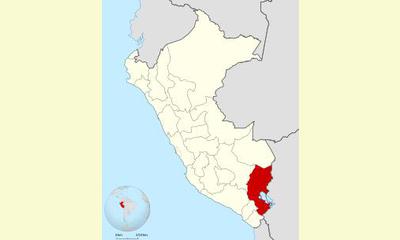|
|
Governors in Peru Get Training in Conflict Alert System
un articulo por Agencia Peruana de Noticias
Governors in the Puno region participated in the workshop on the implementation of the System of Early Warning and Response (SART) as a tool for conflict prevention, organized by the Presidency of the Council of Ministers (PCM).

Location of the Puno Region in Peru (en.wikipedia.org)
click on photo to enlarge
In this way, the political authorities are able to strengthen the concepts and differences between disputes and conflicts, and the need to identify and register these cases at an early stage with the so-called SART.
This training, which was coordinated by the PCM and the office of National Dialogue and Sustainability together with the National Office of Government Affairs along with support from the Organization of American States , brought together the governors of the provinces Moho, El Collao, Huancané, Sandia and Chucuito.
Also in the provinces of Azángaro, San Antonio de Putina, Puno, San Román, Lampa, and Carabaya Melgar, some gathered at the headquarters of the Regional Directorate of Agriculture to receive training.
The event, conducted by specialists of the Center for Conflict Analysis and Resolution at the Pontifical Catholic University of Peru, is part of the commitment made by the Executive in the construction of a National Conflict Prevention System which includes the SART as a prevention tool.
The capacity building of the governors is critical to a conflict prevention policy that seeks to include and integrate the different actors of society who must be part of a culture of peace and dialogue.
(Click here for a Spanish version of this article)
|








|
DISCUSSION
Pregunta(s) relacionada(s) al artículo :
The culture of peace at a regional level, Does it have advantages compared to a city level?
* * * * *
Comentario más reciente:
:
CPNN has often carried articles about establishing a culture of peace at the level of the city, but there are also some advantages to promoting a culture of peace at a somewhat broader regional level.
In particular, the culture of peace needs to be based on a sustainable economy, which, in the long run, should depend on local agricultural production more than imported food. This requires that the unit for the culture of peace include not only the city, but also the agricultural region surrounding it.

|
|









